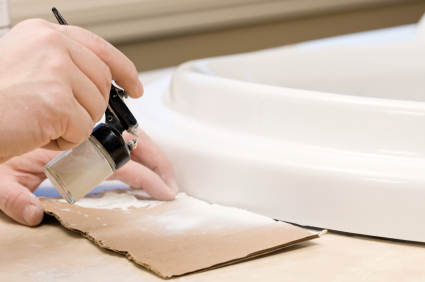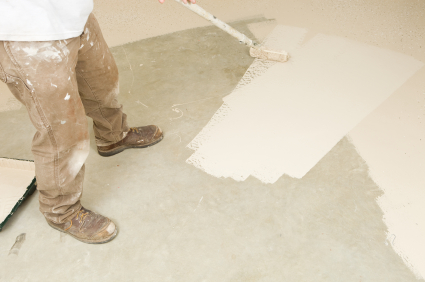
Follow these 10 interior home painting tips to make your painting projects go smoother and faster with a professional quality finish.
1. To avoid lap marks, roll the full height of the wall and keep a wet edge – Lap marks are those ugly stripes caused by uneven layers of paint buildup. They occur when you roll over paint that’s already partly dry. To avoid lap marks, it is important to maintain a “wet edge.” To do this, start near a corner and run the roller up and down the full height of the wall, moving over slightly with each stroke. Move backward where necessary to even out thick spots or runs. Reload the roller often so that it’s always at least half loaded. Keep the open side of the roller frame facing the area that’s already painted. That puts less pressure on the open side of the roller, so you’re less likely to leave paint ridges.
2. Mix several cans of paint in a large bucket for a consistent color throughout the room – Paint color may vary slightly from one can to the next. If you have to open a new can in the middle of the wall, the difference may be noticeable. Mixing the paints together eliminates the problem. The best way to do this is to estimate the amount of paint you’ll need and mix it in a 5-gallon bucket (a process called “boxing”).
3. Let the paint dry, then cut the tape loose for a perfect edge – Once paint dries, it forms a film between the wall and the tape. Simply removing the tape tears pieces of dried paint off the wall. To avoid this, cut the tape loose for a perfect edge. Wait at least 24 hours for the paint to dry, and then use a sharp utility knife or box cutter to slice through the film. As you cut the paint, pull up the tape at a 45-degree angle.
4. Paint the trim first, then the ceiling and the walls – Professional painters follow a certain order when painting a room. They paint the trim first, then the ceiling, then the walls. They do this because it’s faster and easier to tape off the trim than to tape off the walls. When painting the trim, you don’t have to be neat. Just concentrate on getting a smooth finish on the wood. Don’t worry if the trim paint gets onto the walls (you’ll cover it up later when painting the walls). Once the trim is completely painted and dry, tape it off (using an “easy release” painter’s tape), then paint the ceiling, and then the walls.
5. Prime and texture wall patches to avoid a blotchy finish – A quick coat of primer will eliminate flashing and texture differences. To match texture, prime with a roller, feathering out the edges. ![]() Choose a roller thickness to match the surrounding wall texture.
Choose a roller thickness to match the surrounding wall texture.
6. Clean dirty surfaces so the paint can form a strong bond – Paint will easy chip or peel off if painted over dirty, oily surfaces. Before painting, clean dirty areas with a deglosser or heavy-duty cleaner intended for pre-paint cleaning. Wipe the cleaner in a circular motion using a lint-free abrasive pad. Start at the bottom and work up. Be sure to wear rubber gloves and eye protection when using theses cleaners.
7. Roll paint along the edges for consistent texture – Corners and areas next to trim that are painted with only a brush have a noticeably different texture than the surrounding paint. To create a consistent texture, brush on the paint, then immediately roll it out with a 3” roller before the paint dries.
8. Use cotton drop cloths rather than plastic – Spills and splatters will happen regardless of how careful you are, so it is important to prepare for them. Use canvas drop cloths in your work area to protect the floor from spills. The thick canvas stays in place, so you don’t need to tape it, and you can use it to cover any surface.
9. Feather out paint where you can’t keep a wet edge – You can’t cover large areas like ceilings, extra-tall walls or stairwells in single, continuous strokes. The best way to minimize lap marks on these areas is to feather out the paint along the edges that you can’t keep wet. The thinner, feathered coat of paint will avoid the buildup that causes the lap mark.
10. Sand trim between coats for an ultra-smooth finish – For a smooth finish, sand the trim with a fine-grit sanding sponge before applying each coat of paint. Let the first coat of paint dry for at least 24 hours before lightly sanding again and applying the second coat of paint. After each sanding, vacuum the trim and then wipe it down with a tack cloth to remove the dust.














